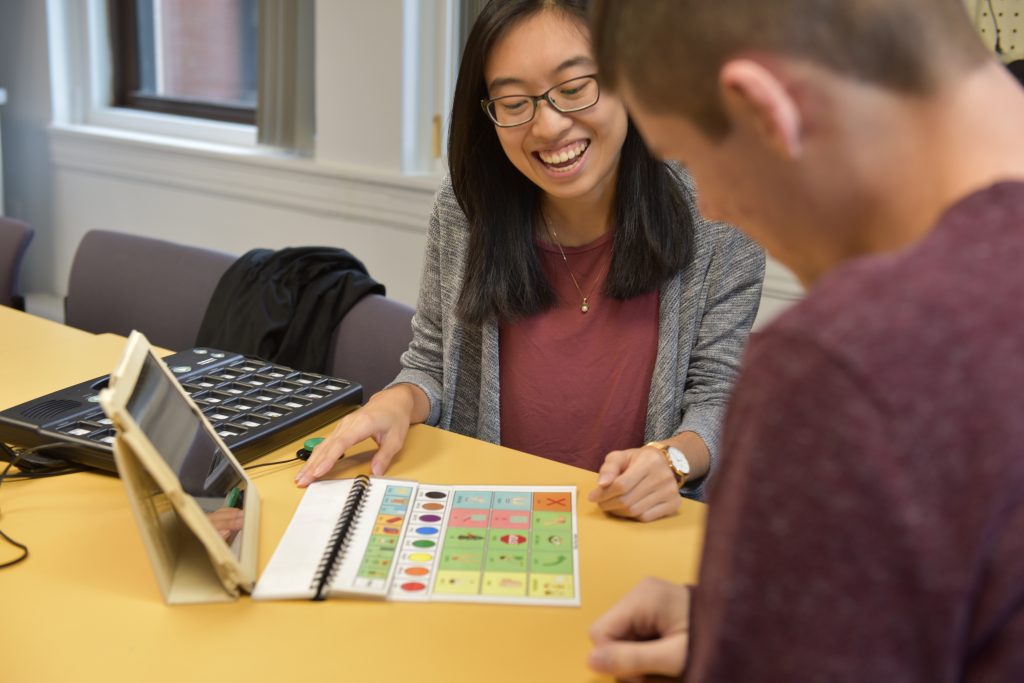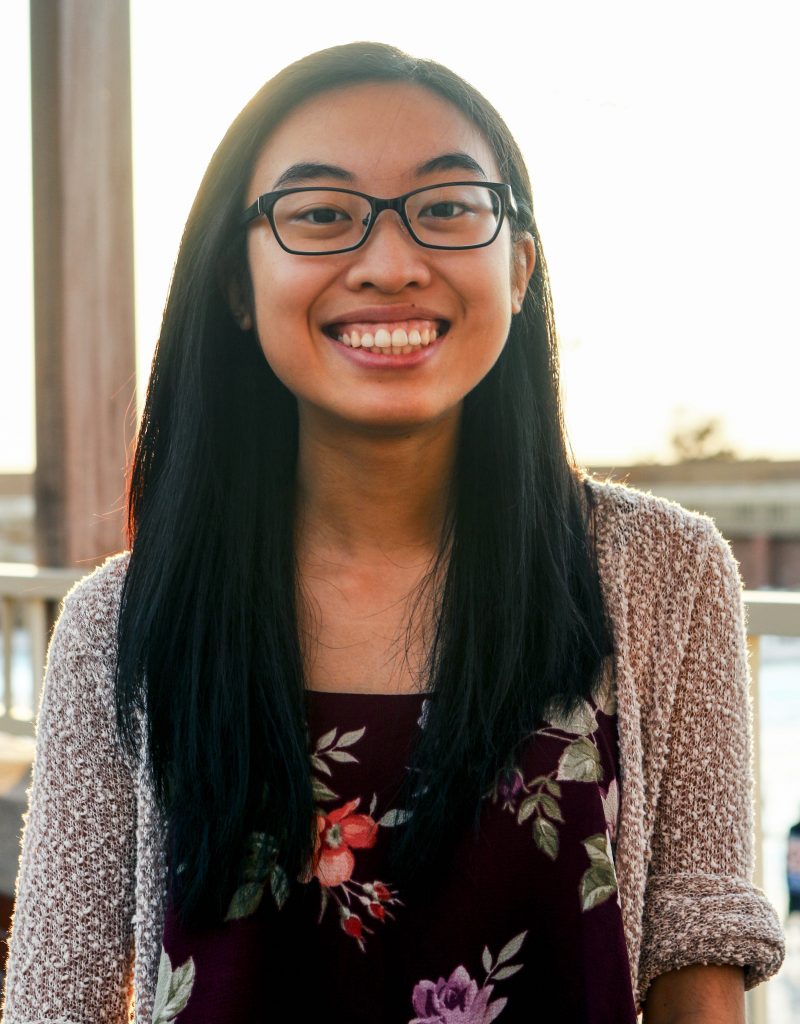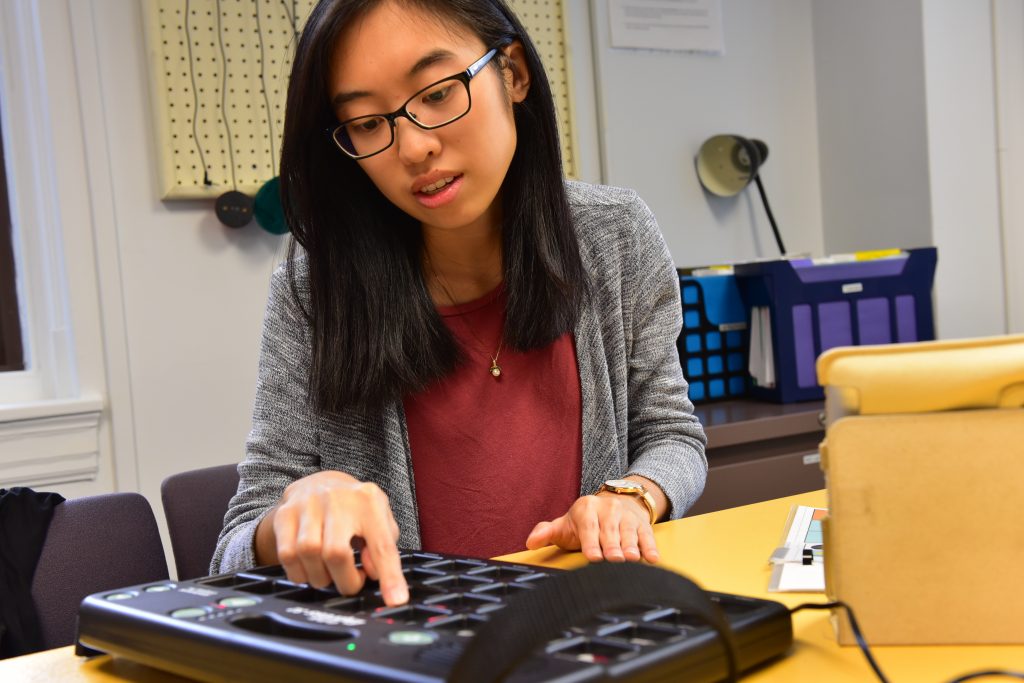Breaking the Diversity Barrier in Speech-Language Pathology

By Molly Loughman
Minorities represent less than 10 percent of speech-language pathologists nationwide — a challenging reality that’s fueled the journey for Chinese-American Communication Sciences and Disorders (CSD) graduate student Kimberly Lin and her mission towards diversifying a field of predominantly white and female communication experts.

“Our whole field is working with children and adults across the lifespan who are super diverse, yet [most speech pathologists] don’t reflect the people they work with. Representation matters,” said Lin, whose East Asian background exposed her to seeing how cultural boundaries prevent people from receiving proper diagnosis and treatment.
One reason for the lack of diversity, Lin explains, is that speech language pathology is not widely recognized in Chinese healthcare services. “In regards to autism and related disorders in East Asian communities, not only is it ‘not recognized,’ but more so, many families don’t want to accept or associate with the disorder because the label and its presentation are considered so negative and shameful,” Lin said.
“I’m passionate about using my position as a Chinese American to access these communities as a person of color and educate, train, and support these families.”
This year, Lin, a second-year grad student from Long Island, New York, earned a selective spot in the American Speech–Language–Hearing Association (ASHA) Minority Student Leadership Program. ASHA is the country’s certifying organization for speech-language pathologists and audiologists.
Created for undergraduate seniors, graduate students, and Doctor of Audiology (AuD) and PhD students studying communication sciences and disorders, the program selects 40 minority students from across the country for educational programming and training to advance their diversity leadership skills and to deepen their insight into ASHA.
From November 18-23, Lin will join thousands in Orlando, Florida, to attend the ASHA Convention, the premier annual professional education event for speech-language pathologists, audiologists, and speech, language, and hearing scientists. There, she’ll attend leadership training workshops and seminars focused on multicultural leadership, diversity training and ASHA leadership as a whole.
“A lot of these problems are institutional; it’s not just individually rooted. There aren’t diverse professors or people in higher leadership positions. So the workshops will give us more insight, as students, into how ASHA is run and how we can get involved in leadership and with other diverse professionals, and hopefully find a mentor and things like that,” Li said.
Ruth Grossman, CSD Chair and Associate Professor, notes that the healthcare and language barriers continue to strengthen the need for multilingual clinicians. “ASHA and the field of speech pathology are working very hard to increase diversity within our ranks to better reflect the population that we serve.
“This is a very important program to help budding clinicians develop skills to become diverse leaders. It’s going to be an incredibly valuable experience and I hope Kimberly brings some of it back to us,” Grossman said.
Multilingual, Multicultural Communication at Emerson
Emerson’s CSD department is actively addressing the field’s lack of diversity with a search for a faculty member whose focus will be multicultural, multilingual clinical issues for both students and faculty.
In addition, Emerson recently hired Associate Professor Robin Danzak, whose background is in language and linguistics, specifically bilingual language and literacy. Danzak plans to teach a course in linguistic diversity, and also to develop a global program for CSD students.

“I love that [diversity, community engagement and globalization] are already a priority for Emerson,” said Danzak, who’s also fluent in Spanish and Italian. “I’m looking forward to getting on board and making contributions at the CSD department.”
Lin is also contributing to the department’s diversity outreach by mentoring her peers and giving tours to prospective students. She says the highlight of her first year at Emerson was her clinical experience, working with her own clients and caseloads across the lifespan and with varying language and learning disabilities, including aphasia and autism. She is eager to further her knowledge during next month’s ASHA Minority Student Leadership Program.
“I really like how empathetic you have to be in the field,” Lin said. “The purpose of the whole field in general is to help people communicate and engage in their communities. I really value people being able to share their stories and to listen to other peoples’ stories.”
Categories